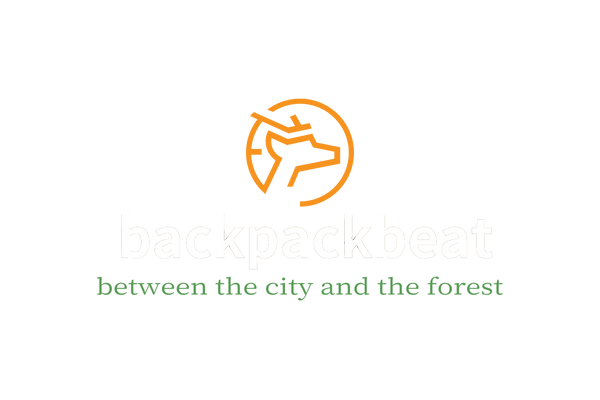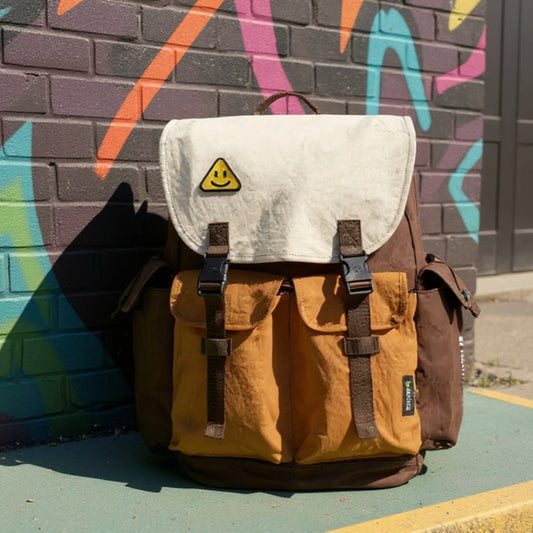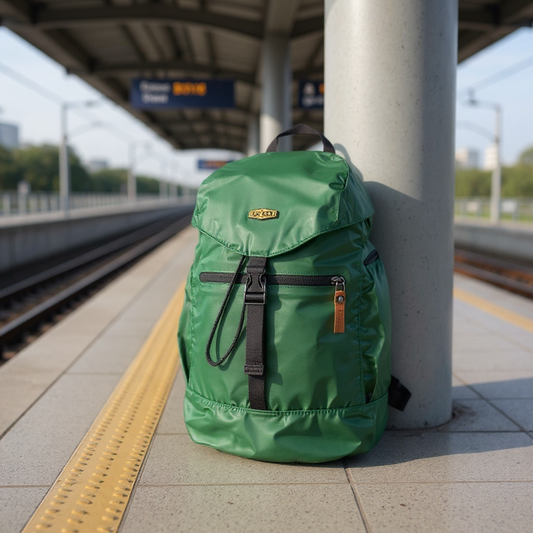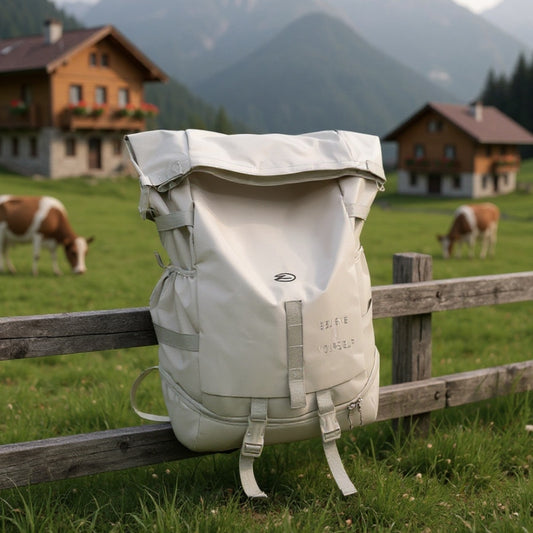Hiking Snacks Essentials: 10 Must-Have Items for Perfect Outdoor Dining
Compartir
Reading time: 6 minutes
Packing for outdoor dining doesn't require bringing your entire kitchen. Whether you're planning hiking snacks breaks in London parks or full-scale picnics, these 10 items handle the most common problems without overcomplicating your setup.
Each item solves specific issues that come up during outdoor meals. Skip the wrong things and you'll spend time dealing with problems instead of enjoying your food.
The 10 Non-Negotiables for Outdoor Dining
1. Waterproof Blanket (Not Just Any Blanket)
Regular blankets soak through from damp grass and become uncomfortable quickly. A proper outdoor blanket has waterproof backing and folds into a compact size with carrying straps.

Why It Matters: Sitting on wet ground ruins outdoor dining faster than bad weather. The waterproof layer keeps everyone dry and comfortable, while the larger size accommodates both people and food without cramped conditions.
Pro Tip: Choose one that's machine washable. Outdoor blankets get dirty, and cleaning difficulties mean you won't use it regularly.
2. Insulated Bag or Cooler (Size Matters)
Temperature control isn't optional for most outdoor dining. Food safety aside, warm drinks and melted snacks make for unpleasant experiences. Match cooler size to your group and duration.
Practical Reality: Hard coolers work better for longer trips and larger groups, while soft insulated bags handle day trips and smaller portions. Both need ice packs rather than loose ice to avoid soggy food disasters.
Size Guide: Personal coolers (12-quart) work for 1-2 people, while family outings need 24-48 quart capacity depending on duration and group size.

3. Reusable Plates and Utensils (Skip the Disposables)
Paper plates become frustrating when they can't handle actual food weight, and plastic utensils break when you need them most. Metal utensils and sturdy plates make eating significantly easier.
Why Upgrade: You'll actually eat your food instead of fighting with flimsy tools. Reusable options also mean less waste and easier food handling.
Transport Solution: Bring a mesh bag or container specifically for dirty utensils. This prevents them from contaminating clean items during transport home.

4. Napkins and Wet Wipes (Double Coverage)
Outdoor eating creates more mess than indoor dining. Wind, uneven surfaces, and informal seating all contribute to spills and sticky situations that require proper cleanup options.

The Combination: Paper napkins handle basic cleanup, while wet wipes deal with sticky hands and faces. Both are necessary because they solve different problems.
Pack Smart: Bring more than you think you need. Running out of cleanup options during outdoor dining creates cascading problems that affect everyone's experience.
5. Sharp Knife and Cutting Board (The Forgotten Essentials)
Many outdoor meals require on-site preparation - cutting fruit, slicing cheese, portioning larger items. Trying to do this without proper tools leads to poor results and potential injuries.
Safety First: A sharp knife in a protective sheath is safer than a dull knife that requires excessive pressure. Include a small cutting board to protect surfaces and provide stability.
Alternative Options: Pre-cut everything at home if knife transport concerns you, but this limits flexibility and increases prep time significantly.
6. Trash Bags and Storage Containers (Plan the Exit Strategy)
Outdoor dining generates waste that needs proper handling. Trash bags keep areas clean and prevent wildlife problems, while storage containers handle leftovers and protect unused items.
Multiple Bags: Separate bags for trash and dirty dishes prevent contamination. Clear bags or containers make it easier to identify contents during packing.
Leave No Trace: Proper waste management isn't just considerate - many outdoor areas require it. Plan cleanup from the beginning rather than dealing with it as an afterthought.
7. Proper Hiking Snacks (The Main Event)
The actual food you bring determines whether your outdoor time is satisfying or leaves you hungry and irritable. Smart snack choices provide sustained energy without requiring complex preparation or cleanup.

Energy Balance: Combine quick-burning carbs with protein and healthy fats. Trail mix, energy bars, and fresh fruit work well together. Avoid foods that melt easily or require refrigeration in hot weather.
Portion Planning: Pack more than you think you need, especially for longer outdoor adventures. Running low on food affects mood and energy levels significantly. Individual portions prevent overeating early and running out later.
Weather Considerations: Hot weather rules out chocolate and dairy-based items unless properly cooled. Cold weather makes room-temperature foods more appealing than chilled options.
8. Sunscreen and Bug Spray (Weather Reality Check)
Outdoor dining means extended sun exposure and potential insect encounters. Both can ruin otherwise perfect experiences if you're unprepared for environmental conditions.
Application Timing: Apply sunscreen before eating to avoid contaminating food with chemical residue. Bug spray works better as prevention than as reaction to existing problems.
Group Consideration: Bring enough for everyone in your party. Individual tolerance for sun and insects varies significantly, but everyone benefits from protection options.

9. Hand Sanitizer and Paper Towels (Hygiene Basics)
Outdoor environments lack convenient handwashing facilities. Maintaining basic hygiene during food handling prevents illness and makes eating more pleasant for everyone.
Food Safety: Clean hands before eating and after handling raw items or touching surfaces. This becomes more important during outdoor dining where contamination sources increase.
Practical Usage: Paper towels serve multiple functions - surface cleaning, spill management, and hand drying after sanitizer use.
10. Weather Backup Plan (Things Change Fast)
Outdoor conditions change quickly. Wind, rain, or temperature drops can end your meal if you're not prepared.
Wind Problems: Clips or small weights keep napkins and lightweight items from blowing away. Food covers prevent debris while allowing air circulation.
Rain Protection: Small pop-up shelter or large umbrella gives quick cover. Even brief showers end outdoor eating without some protection.
Temperature Drops: Bring extra layers and insulated food covers. Temperatures often drop more than expected during extended outdoor time.
Packing Strategy That Actually Works
Organization Prevents Problems
Pack items in reverse order of use - things you need first should be easily accessible. Plates and utensils go on top, while backup items can stay deeper in containers.
Weight Distribution
Heavier items like coolers and water should have dedicated carrying solutions. Trying to carry everything in one trip often leads to dropped items and frustration.
Test Your System
Try your complete packing system at home before heading out. This reveals missing items and packaging problems before they become field issues.
Connect to Your Bigger Outdoor Strategy
These essentials work whether you're planning elaborate outdoor feasts or simple hiking snacks breaks. The same organizational principles apply - proper preparation prevents problems.
If you're looking for specific locations to use these essentials, check out our guides to London's best hiking snacks parks or Central Park's top picnic spots. Both provide tested locations where these 10 items will prove their worth.
For carrying all these items efficiently, consider a dedicated outdoor dining pack that keeps everything organized and readily accessible. The 28L Stylish Waterproof Backpack provides enough space for all essentials while keeping items dry and organized during transport.

Making This Work for You
Keep these 10 items together in one container so you're ready for outdoor meals without major planning each time. Check and restock after each use rather than discovering missing pieces when you want to leave.
Start with simple meals in familiar places to test what works for your group, then expand from there. The point is making outdoor eating practical enough that you'll actually do it.




